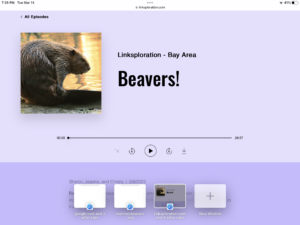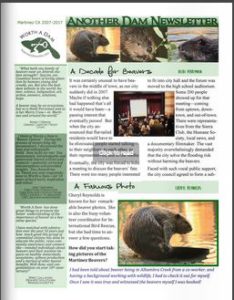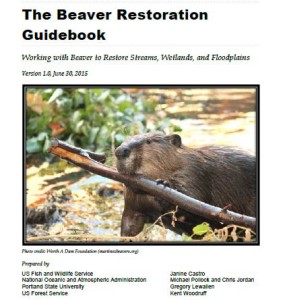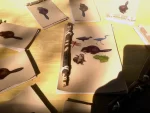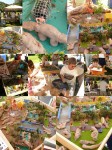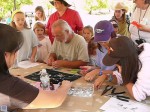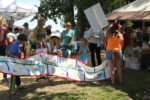Reversing Course on Beavers
BUTTE, Mont. — Once routinely trapped and shot as varmints, their dams obliterated by dynamite and bulldozers, beavers are getting new respect these days. Across the West, they are being welcomed into the landscape as a defense against the withering effects of a warmer and drier climate.
Beaver dams, it turns out, have beneficial effects that can’t easily be replicated in other ways. They raise the water table alongside a stream, aiding the growth of trees and plants that stabilize the banks and prevent erosion. They improve fish and wildlife habitat and promote new, rich soil.
And perhaps most important in the West, beaver dams do what all dams do: hold back water that would otherwise drain away.
“People realize that if we don’t have a way to store water that’s not so expensive, we’re going to be up a creek, a dry creek,” said Jeff Burrell, a scientist with the Wildlife Conservation Society in Bozeman, Mont. “We’ve lost a lot with beavers not on the landscape.”
 Experts have long known of the potential for beaver dams to restore damaged landscapes, but in recent years the demand has grown so rapidly that government agencies are sponsoring a series of West Coast workshops and publishing a manual on how to attract beavers.
Experts have long known of the potential for beaver dams to restore damaged landscapes, but in recent years the demand has grown so rapidly that government agencies are sponsoring a series of West Coast workshops and publishing a manual on how to attract beavers.
“We can spend a lot of money doing this work, or we can use beavers for almost nothing,” Mr. Burrell said.
Beavers are ecosystem engineers. As a family moves into new territory, the rodents drop a large tree across a stream to begin a new dam, which also serves as their lodge. They cover it with sticks, mud and stones, usually working at night. As the water level rises behind the dam, it submerges the entrance and protects the beavers from predators.
Lookee what I found in the New York Times! (Three people have sent it to me this morning so far. Make that four.Five.) It is so VERY much better than the last beaver article in the Times that I can barely bring myself to be sarcastic, which, as you know, is rare for me. This is big news. Big Beaver News.
This pooling of water leads to a cascade of ecological changes. The pond nourishes young willows, aspens and other trees — prime beaver food — and provides a haven for fish that like slow-flowing water. The growth of grass and shrubs alongside the pond improves habitat for songbirds, deer and elk.
Moreover, because dams raise underground water levels, they increase water supplies and substantially lower the cost of pumping groundwater for farming.
And they help protect fish imperiled by rising water temperatures in rivers. The deep pools formed by beaver dams, with cooler water at the bottom, are “outstanding rearing habitat for juvenile coho salmon,” said Michael M. Pollock, a fish biologist with the National Oceanic and Atmospheric Administration in Seattle, who has studied the ecological effects of beaver dams for 20 years.
When the NYT talks to Michael Pollock about beavers and fish, I pretty just want to sit back and enjoy it. Go Michael! I’m not sure why they didn’t ask you to comment on the BOGUS research quoted at the end of the article that says beaver dams benefit invasive fish like carp and bass, but then all reporters like a good horse race. Every now and then they jar my perfect appreciative moment with something like this.
As a family moves into new territory, the rodents drop a large tree across a stream to begin a new dam, which also serves as their lodge.
I’m sorry. WTF? Did you just say that the dam also serves as their lodge? Are you in Kindergarten? Wait. Kindergartners know better than that. Did you drop OUT of Kindergarten? It’s a very nice idea to think that beavers maintain a live-work space like the metal artists in Greenwich, but actually, the dam holds back water, you know? Which sometimes pushes really hard.So it would be a very,very bad structural idea if it was hollow.
Talk to your engineer friends. They’ll explain it.
Overall this article is FULL of positive things about beavers. It’s the article we need to talk about drought and salmon and beaver solutions in the west. But don’t worry, they make sure to end the article with a little mystery.
“There’s a lot of unknowns before we can say what the return of beavers means for these arid ecosystems,” he said. “The assumption is it’s going to be good in all situations,” he added. “But the jury is still out, and it’s going to take a couple of decades.”
Ahh Jim, you must have looked so long to find someone to give you that quote. I know I’m not a fancy NYT science reporter or anything but do you wanna know what Michael Pollock said to me about that research? You know, the guy you interviewed from NOAA earlier?
This sounds like a certain person’s master’s thesis. This poor graduate student was sent out to sample beaver dams in remote regions of Arizona and didn’t really have time to come up with a good study design. There were all kinds of sampling, methodological and logistical problems with their approach and they really didn’t end up with much in the way of data that was very analyzable.
There are a lot of exotics throughout the system and little to suggest that beaver dams are responsible for that problem. Beaver have been part of natural stream and riparian ecosystem in that region for a long time and the native species have adapted, and potentially benefited from their presence. To conclude that beaver dams “could” negatively impact native fish populations is misleading. It would be just as reasonable to conclude that beaver dams “could” positively impact native fish populations, since that is what we see everywhere else, but that the timing and very low frequency of data sampling didn’t occur during the times of year that native fish might use beaver ponds.
The reality is that this was a poorly designed study that produced little in the way of meaningful results, but perhaps will guide future research efforts. Pretty typical for many Master’s thesis in natural resource fields-a good learning experience, but not a lot of useful information applicable to management.
Michael M. Pollock, Ph.D. Ecosystems Analyst NOAA-Northwest Fisheries Science Center FE Division, Watershed ProgramStill and all, it’s a great beaver day. And I look forward to a full inbox telling me how great. There’s an awesome article from Mary Holland that we need to talk about and a deeply stupid one from National Geographic that will require my undivided mocking. But we’ll get to those soon. In the mean time, think about it. Beaver benefits in the NY Times. It’s a victorious dam. A day that will go down in history. The article is also on podcast, so listen for yourself and send it to a couple friends.

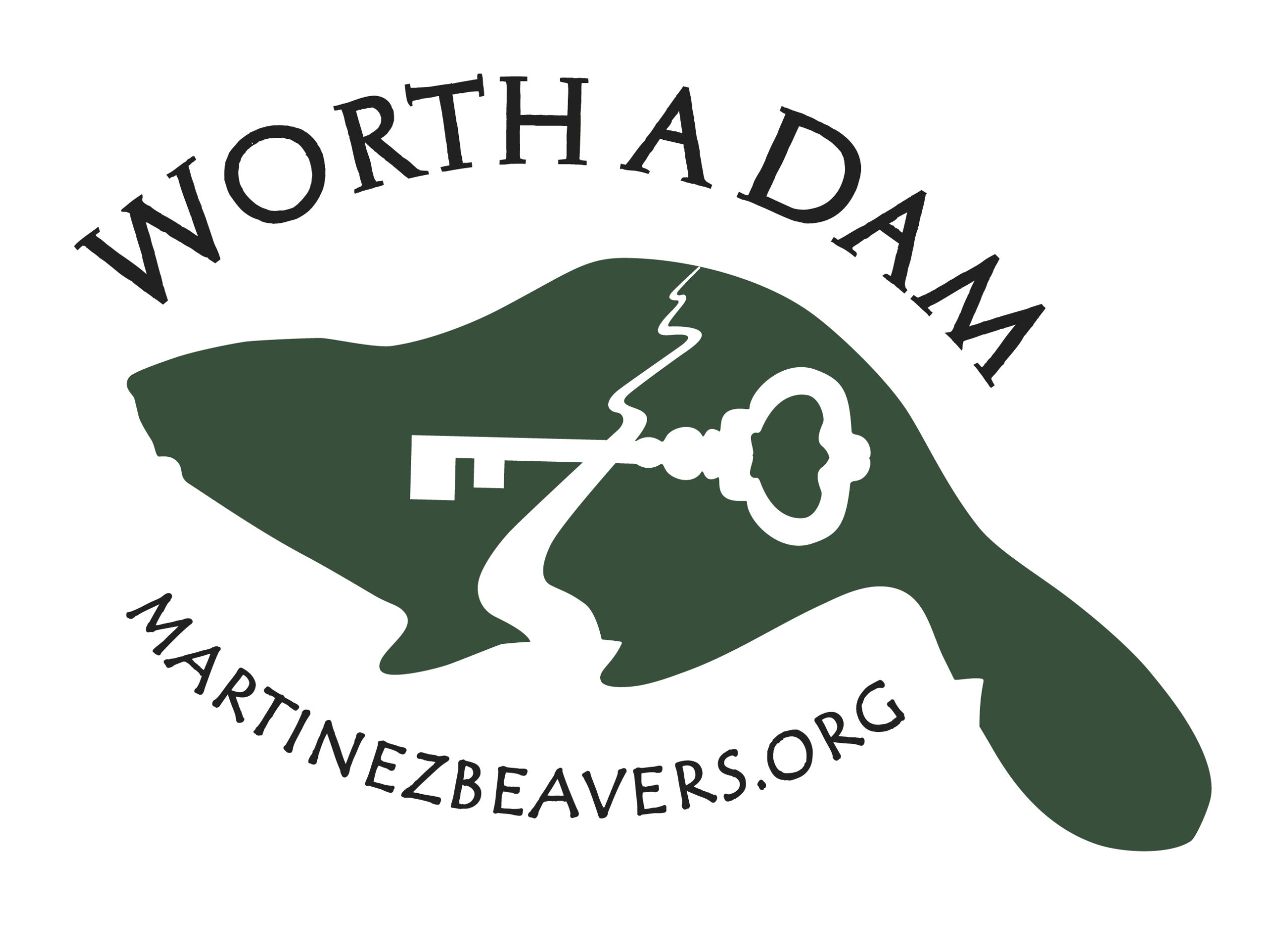








 Good lord. Can you imagine the conversation that night sitting down to a pint (or a sherry?) with Paul and Louise by a crackling fire in the great room and talking about a UK filled with beavers? I am so jealous I can almost taste it. But thank God for the Ramsay’s and their gentrified protection of beavers. They bring a very classy element to the discussion.
Good lord. Can you imagine the conversation that night sitting down to a pint (or a sherry?) with Paul and Louise by a crackling fire in the great room and talking about a UK filled with beavers? I am so jealous I can almost taste it. But thank God for the Ramsay’s and their gentrified protection of beavers. They bring a very classy element to the discussion. Hand me the popcorn. If George Moonbiot is really going after the beaver-phobic anglers, I want a front row seat. I am sick and tired of pretend fishermen being revered when they lie about beavers.
Hand me the popcorn. If George Moonbiot is really going after the beaver-phobic anglers, I want a front row seat. I am sick and tired of pretend fishermen being revered when they lie about beavers.


